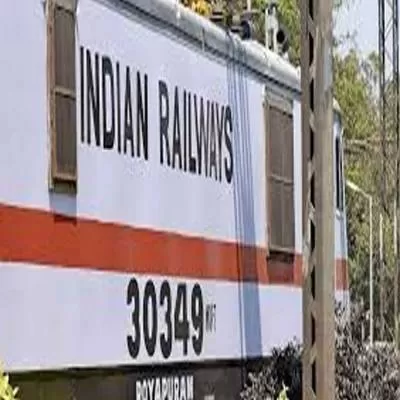- Home
- Real Estate
- The Ripple Effects of RERA

The Ripple Effects of RERA
Transparency and every buyer's best dealer - this is what RERA can bring to a developer's repute along with the 'industry' status that the fraternity has always longed for!
May 1, 2017, will always be recalled as a turning point in the history of real estate in India - when all states were asked to notify RERA rules. According to a recent joint report by Khaitan & Co and Knight Frank, the states with RERA rules notified and in force are Andhra Pradesh, Delhi, Gujarat, Madhya Pradesh, Maharashtra, Odisha and the Union Territories; states with draft rules prepared include Haryana, Punjab, Tamil Nadu and West Bengal; and states that have notified the rules, but not gazetted (hence not in force) include Bihar, Karnataka, Rajasthan, Uttar Pradesh and Uttarakhand.
First movers
Mayfair Housing has been the first company to upload its application (project) - Mayfair Vishwaraja - for registration under RERA in Maharashtra (MAHARERA), also making it the first in the country! What spells good news is that the project was also granted the registration certificate by the MAHARERA authority within 10 days of scrutinising the application. First movers also include Thane-based Raunak Group, only second to Mayfair Housing, to register their project Unnathi Woods Phase-VII A under MAHARERA.
While some builders are yet to register their projects (owing to detailed and confidential information required), many are also in the process of seeking clarity on the same. This begs the question: How did the first two movers speed up to MAHARERA?
Sanjay Kumar Jain, CFO, Mayfair Housing, says, 'After RERA was notified by the Centre a year ago, we started studying the same, and soon after the Maharashtra Government notified the rules, we started preparing the application for registration.' Detailing the process further, Rajan Bandelkar, Managing Director, Raunak Group and Vice President, NAREDCO West, says, 'With all documents and legal papers in place, the builder has to have all his projections in place including the projected cost and land cost.' (Refer to the 15-step process to register a project).
The ongoing saga
The black and white area - that is being mucked up by twisted reading of the RERA Rules - pertains to ongoing projects.
As Divya Malcolm, Principal Associate, Kochhar & Co, says, 'Section 3 of the Act describes an ongoing project as one for which the completion certificate has not been issued. The official website clarifies that even if part of Occupation Certificate (OC) has been obtained, the project will be construed as ongoing.' (Read insights from Divya Malcolm on page 112.) The only exceptions to registration are: If the land proposed to be developed is less than 500 sq m; or the number of apartments proposed to be sold is less than eight. That said, Harshavardhan Neotia, Chairman, Ambuja Neotia Group, adds that ongoing projects will have to be registered under RERA; and Jain says that developers will have to adhere to a promised completion timeline, overall legality, provision of promised amenities and quality standards.
In case of delayed projects, Bandelkar says, 'The developer may get his money back or sell his other assets to complete the project in time. Otherwise the authority will take action.' Here, Neotia shares from recent data: 'Sixty-five per cent of all ongoing residential projects are not completed on time, with the delay being anywhere between a few months to five years and more. The major causes for delay vary from issues in project funding and financing to getting regulatory approvals and the overall market volatility and weakening demand.' He is firm on saying, 'Not all causes for delay are due to developers.'
That said, till July 31, developers can continue marketing, advertising and selling (ongoing projects as well as new launches), post which, they will have to register their projects in order to sell.
Launch rate pad
RERA is a compliance process and while it is not perceived to have an adverse impact on launches and home prices, some industry heads think differently.
Jain says optimistically: 'RERA will create confidence in the minds of prospective customers, bankers and other stakeholders.' Bandelkar sees a swing in the scenario. 'Earlier, developers did soft launches, pre launches, special offers, etc, which will now come to a halt. From August 1 onwards, only what is registered and approved can be launched and/or sold, which will drastically reduce supply.'
Bandelkar sees a stable market at present with no immediate reduction or increase in property prices; but in the long term, he sees a gradual increase. Neotia thinks differently, as he says, 'With RERA, the overall development cost is expected to go up and likely to result in an increase in property prices.'
One project - one account Rule 5 - the most important of all. As Malcolm says, 'It itemises the permissible withdrawals from the 70 per cent of the receivables that are required to be parked in a separate account.'
Yes, the regulatory makes it compulsory to deposit 70 per cent amount of consideration received for every project in a separate account that needs to be maintained in a scheduled bank to cover the construction as well as land cost. But for withdrawal, a certificate from an engineer, architect and a chartered accountant (CA) in practice becomes critical.
Sourabh Ajmera, Partner, Ajmera & Ajmera Chartered Accountants, details the requirement for the CA's certificate (also refer to box 109):
- All cost incurred to acquire land (such as acquisition and legal cost, amount paid or payable to obtain development rights and FSI, cost incurred for clearance of land from any encumbrances and any other sum payable).
- Estimated cost of construction incurred as certified by the engineer in Form-2.
- Actual cost of construction incurred as per books of accounts (including everything on-site, directly incurred to complete construction of the entire phase of the project).
- Percentage completion of construction work certified by the architect in Form-1.
Based on the above details, the CA will certify the proportion of the cost incurred on construction and land cost to the total estimated project cost. This will determine the maximum amount that can be withdrawn from the separate account. Ajmera adds, 'The promoter shall be required to follow the aforesaid procedure at the time of every withdrawal from the account till the OC for the project is obtained.
On receipt of the OC, the entire balance amount can be withdrawn by the promoter.'
Speaking on the role of the engineer, Chetan Raikar, Chairman & Managing Director, Structwel Designers and Consultants, says, 'Based on Indian standard specifications, an engineer can certify the quality and cost of structural members such as concrete columns, beams, slabs, water tanks, etc. He can also certify the quality and cost of non structural members like walls, plaster, waterproofing, plumbing, electrification, infrastructure like swimming pools and its filtration system, compound wall, main gates, internal finishes, doors and windows, etc.
The loopholes
With debates and consultations on in full swing for clarity on RERA, several gaps exist in the understanding and requirements at different levels.
Bandelkar points out to one lacuna as 'approving officers not coming under the ambit of the Act.' Neotia says, 'Developers should be able to collate the documents, have necessary approvals to get the registration, and relook at the relationships with different vendors and third parties they work with.'
Specific to Maharashtra, Advocate Shirish Deshpande, Chairman, Mumbai Grahak Panchayat (MGP), shares an example, 'As per Sec 3 (2), projects of area less than 500 sq m or less than eight apartments are exempted from registration. However, states are given powers to reduce this threshold limit to cover even the smaller projects.' He sees the direct consequence of this such that builders will split their bigger project into small projects of less than 500 sq m wherever possible and keep out of RERA.
Deshpande also points out to the payment schedule in the model agreement for sale being more builder-friendly. 'Although RERA prevents the builder from collecting more than 10 per cent before the agreement, the rules generously allow collection of additional 20 per cent on signing the agreement and another 15 per cent till the plinth level. That said, 45 per cent of the cost is recovered even before the first slab of the multi-storey tower is constructed. This is highly unfair and needs correction,' he says.
The aftermath
With RERA coming in, the sector is set to see some amount of consolidation, and developers with no competence or resources to execute projects in the regulated environment will get weeded out.
Further to CW PROPERTY TODAY's interaction with the regulators of Maharashtra and Madhya Pradesh (read interviews on page 110-111), developers are on the go with the mission to register projects under RERA within the declared 90 days window.
While the law is largely consumer-friendly, bringing greater transparency and accountability on the part of developers, it is expected to improve overall compliance and completion of projects. Jain says, 'This will instill trust and confidence among stakeholders including bankers, suppliers, contractors, employees, local authorities and others.' He also points out that the Act casts responsibility on the buyers for timely payments as also on approving authorities for timely approvals.
While RERA aims at safeguarding the homebuyers' interest and ensuring timely and quality construction, some voids are evident - the real estate fraternity still in a limbo for clarity, all states yet to notify the Act, and ongoing debates for the Act to be more in the favour of the consumer. The ripple effects are many with an outcome still questionable, until the Act yields positive results!
15-Step Process to Register a Project
1. Keep handy details of partner/director/authorised signatory with PAN address and Aadhar Card and photograph.
2. Details of completed projects: Past five years with location, name of project, number of buildings, tenement, shops, land area, cost, original proposed date of completion and actual date of completion.
3. Land details of project to be registered such as area in sq m, area of recreational open space, sanction building, proposed but not sanctioned building and total building and boundaries of land.
4. FSI details: Built-up area as per approved FSI and proposed FSI, total FSI.
5. Details of new bank account opened for RERA.
6. Building details: Name, number of basement, plinth, slabs, stilt, parking, flats (highlighting sold flats), flat configuration, carpet area.
7. Details of common area: Number of garage and covered parking, sold and status of work in percentage.
8. Development work: Detail as per architect certificate including internal road, water supply, STP, landscape, lights, fire safety, etc, along with status of completion in percentage.
9. Cost details as per CA certificate: Total estimated cost and actual cost incurred.
10. Document upload.
11. Details of real estate agent, architect, contractor, engineer or others.
12. Details of litigation: Type of case, petition, year, present status, etc.
13. Task or activity as per architect certificate.
14. Check filled form.
15. Payment via various options available.
Source: Raunak Group
Annual Auditing Mandatory
Sourabh Ajmera, Partner, Ajmera & Ajmera Chartered Accountants, shares more on the annual auditing of a project:
'As per section 4(2)(l)(D) third proviso, the promoter is required to get his accounts audited for each project separately within six months after the end of every financial year by a CA in practice, and shall produce a statement of accounts duly certified and signed by the CA. It shall be verified during the audit that the amount collected for a particular project has been utilised for the same project, and the withdrawal complies with the proportion to the percentage of completion of the project. This will be a cross check on the promoter to see if he is utilising this money for the particular project only and in correct proportion. If the CA finds any discrepancies, the amount withdrawn in excess to the eligible amount will be specified in his report. That said, the receipts from booking and other compliance of a project need to be maintained and utilised as per the provision of the Act.'
- SHRIYAL SETHUMADHAVAN & SERAPHINA D'SOUZA
To share your views on RERA, write in at feedback@ConstructionWorld.in
- Transparency
- RERA
- Khaitan & Co
- Knight Frank
- MAHARERA
- Mayfair Housing
- Unnathi Woods
- Raunak Group
- Sanjay Kumar Jain
- Rajan Bandelkar
- NAREDCO West
- Divya Malcolm
- Occupation Certificate
- Ambuja Neotia Group
- Structwel Designers and Consultants
- Walls
- Plaster
- waterproofing
- Plumbing
- Electrification
- Infrastructure
- Shirish Deshpande
- MGP
- FSI
Is the Real Estate (Regulation and Development) Act, 2016 proving to be the perfect solution to challenges faced by the real estate industry and property buyers? CW PROPERTY TODAY finds some answers... Transparency and every buyer's best dealer - this is what RERA can bring to a developer's repute along with the 'industry' status that the fraternity has always longed for! May 1, 2017, will always be recalled as a turning point in the history of real estate in India - when all states were asked to notify RERA rules. According to a recent joint report by Khaitan & Co and Knight Frank, the states with RERA rules notified and in force are Andhra Pradesh, Delhi, Gujarat, Madhya Pradesh, Maharashtra, Odisha and the Union Territories; states with draft rules prepared include Haryana, Punjab, Tamil Nadu and West Bengal; and states that have notified the rules, but not gazetted (hence not in force) include Bihar, Karnataka, Rajasthan, Uttar Pradesh and Uttarakhand. First movers Mayfair Housing has been the first company to upload its application (project) - Mayfair Vishwaraja - for registration under RERA in Maharashtra (MAHARERA), also making it the first in the country! What spells good news is that the project was also granted the registration certificate by the MAHARERA authority within 10 days of scrutinising the application. First movers also include Thane-based Raunak Group, only second to Mayfair Housing, to register their project Unnathi Woods Phase-VII A under MAHARERA. While some builders are yet to register their projects (owing to detailed and confidential information required), many are also in the process of seeking clarity on the same. This begs the question: How did the first two movers speed up to MAHARERA? Sanjay Kumar Jain, CFO, Mayfair Housing, says, 'After RERA was notified by the Centre a year ago, we started studying the same, and soon after the Maharashtra Government notified the rules, we started preparing the application for registration.' Detailing the process further, Rajan Bandelkar, Managing Director, Raunak Group and Vice President, NAREDCO West, says, 'With all documents and legal papers in place, the builder has to have all his projections in place including the projected cost and land cost.' (Refer to the 15-step process to register a project). The ongoing saga The black and white area - that is being mucked up by twisted reading of the RERA Rules - pertains to ongoing projects. As Divya Malcolm, Principal Associate, Kochhar & Co, says, 'Section 3 of the Act describes an ongoing project as one for which the completion certificate has not been issued. The official website clarifies that even if part of Occupation Certificate (OC) has been obtained, the project will be construed as ongoing.' (Read insights from Divya Malcolm on page 112.) The only exceptions to registration are: If the land proposed to be developed is less than 500 sq m; or the number of apartments proposed to be sold is less than eight. That said, Harshavardhan Neotia, Chairman, Ambuja Neotia Group, adds that ongoing projects will have to be registered under RERA; and Jain says that developers will have to adhere to a promised completion timeline, overall legality, provision of promised amenities and quality standards. In case of delayed projects, Bandelkar says, 'The developer may get his money back or sell his other assets to complete the project in time. Otherwise the authority will take action.' Here, Neotia shares from recent data: 'Sixty-five per cent of all ongoing residential projects are not completed on time, with the delay being anywhere between a few months to five years and more. The major causes for delay vary from issues in project funding and financing to getting regulatory approvals and the overall market volatility and weakening demand.' He is firm on saying, 'Not all causes for delay are due to developers.' That said, till July 31, developers can continue marketing, advertising and selling (ongoing projects as well as new launches), post which, they will have to register their projects in order to sell. Launch rate pad RERA is a compliance process and while it is not perceived to have an adverse impact on launches and home prices, some industry heads think differently. Jain says optimistically: 'RERA will create confidence in the minds of prospective customers, bankers and other stakeholders.' Bandelkar sees a swing in the scenario. 'Earlier, developers did soft launches, pre launches, special offers, etc, which will now come to a halt. From August 1 onwards, only what is registered and approved can be launched and/or sold, which will drastically reduce supply.' Bandelkar sees a stable market at present with no immediate reduction or increase in property prices; but in the long term, he sees a gradual increase. Neotia thinks differently, as he says, 'With RERA, the overall development cost is expected to go up and likely to result in an increase in property prices.' One project - one account Rule 5 - the most important of all. As Malcolm says, 'It itemises the permissible withdrawals from the 70 per cent of the receivables that are required to be parked in a separate account.' Yes, the regulatory makes it compulsory to deposit 70 per cent amount of consideration received for every project in a separate account that needs to be maintained in a scheduled bank to cover the construction as well as land cost. But for withdrawal, a certificate from an engineer, architect and a chartered accountant (CA) in practice becomes critical. Sourabh Ajmera, Partner, Ajmera & Ajmera Chartered Accountants, details the requirement for the CA's certificate (also refer to box 109): All cost incurred to acquire land (such as acquisition and legal cost, amount paid or payable to obtain development rights and FSI, cost incurred for clearance of land from any encumbrances and any other sum payable). Estimated cost of construction incurred as certified by the engineer in Form-2. Actual cost of construction incurred as per books of accounts (including everything on-site, directly incurred to complete construction of the entire phase of the project). Percentage completion of construction work certified by the architect in Form-1. Based on the above details, the CA will certify the proportion of the cost incurred on construction and land cost to the total estimated project cost. This will determine the maximum amount that can be withdrawn from the separate account. Ajmera adds, 'The promoter shall be required to follow the aforesaid procedure at the time of every withdrawal from the account till the OC for the project is obtained. On receipt of the OC, the entire balance amount can be withdrawn by the promoter.' Speaking on the role of the engineer, Chetan Raikar, Chairman & Managing Director, Structwel Designers and Consultants, says, 'Based on Indian standard specifications, an engineer can certify the quality and cost of structural members such as concrete columns, beams, slabs, water tanks, etc. He can also certify the quality and cost of non structural members like walls, plaster, waterproofing, plumbing, electrification, infrastructure like swimming pools and its filtration system, compound wall, main gates, internal finishes, doors and windows, etc. The loopholes With debates and consultations on in full swing for clarity on RERA, several gaps exist in the understanding and requirements at different levels. Bandelkar points out to one lacuna as 'approving officers not coming under the ambit of the Act.' Neotia says, 'Developers should be able to collate the documents, have necessary approvals to get the registration, and relook at the relationships with different vendors and third parties they work with.' Specific to Maharashtra, Advocate Shirish Deshpande, Chairman, Mumbai Grahak Panchayat (MGP), shares an example, 'As per Sec 3 (2), projects of area less than 500 sq m or less than eight apartments are exempted from registration. However, states are given powers to reduce this threshold limit to cover even the smaller projects.' He sees the direct consequence of this such that builders will split their bigger project into small projects of less than 500 sq m wherever possible and keep out of RERA. Deshpande also points out to the payment schedule in the model agreement for sale being more builder-friendly. 'Although RERA prevents the builder from collecting more than 10 per cent before the agreement, the rules generously allow collection of additional 20 per cent on signing the agreement and another 15 per cent till the plinth level. That said, 45 per cent of the cost is recovered even before the first slab of the multi-storey tower is constructed. This is highly unfair and needs correction,' he says. The aftermath With RERA coming in, the sector is set to see some amount of consolidation, and developers with no competence or resources to execute projects in the regulated environment will get weeded out. Further to CW PROPERTY TODAY's interaction with the regulators of Maharashtra and Madhya Pradesh (read interviews on page 110-111), developers are on the go with the mission to register projects under RERA within the declared 90 days window. While the law is largely consumer-friendly, bringing greater transparency and accountability on the part of developers, it is expected to improve overall compliance and completion of projects. Jain says, 'This will instill trust and confidence among stakeholders including bankers, suppliers, contractors, employees, local authorities and others.' He also points out that the Act casts responsibility on the buyers for timely payments as also on approving authorities for timely approvals. While RERA aims at safeguarding the homebuyers' interest and ensuring timely and quality construction, some voids are evident - the real estate fraternity still in a limbo for clarity, all states yet to notify the Act, and ongoing debates for the Act to be more in the favour of the consumer. The ripple effects are many with an outcome still questionable, until the Act yields positive results! 15-Step Process to Register a Project 1. Keep handy details of partner/director/authorised signatory with PAN address and Aadhar Card and photograph. 2. Details of completed projects: Past five years with location, name of project, number of buildings, tenement, shops, land area, cost, original proposed date of completion and actual date of completion. 3. Land details of project to be registered such as area in sq m, area of recreational open space, sanction building, proposed but not sanctioned building and total building and boundaries of land. 4. FSI details: Built-up area as per approved FSI and proposed FSI, total FSI. 5. Details of new bank account opened for RERA. 6. Building details: Name, number of basement, plinth, slabs, stilt, parking, flats (highlighting sold flats), flat configuration, carpet area. 7. Details of common area: Number of garage and covered parking, sold and status of work in percentage. 8. Development work: Detail as per architect certificate including internal road, water supply, STP, landscape, lights, fire safety, etc, along with status of completion in percentage. 9. Cost details as per CA certificate: Total estimated cost and actual cost incurred. 10. Document upload. 11. Details of real estate agent, architect, contractor, engineer or others. 12. Details of litigation: Type of case, petition, year, present status, etc. 13. Task or activity as per architect certificate. 14. Check filled form. 15. Payment via various options available. Source: Raunak Group Annual Auditing Mandatory Sourabh Ajmera, Partner, Ajmera & Ajmera Chartered Accountants, shares more on the annual auditing of a project: 'As per section 4(2)(l)(D) third proviso, the promoter is required to get his accounts audited for each project separately within six months after the end of every financial year by a CA in practice, and shall produce a statement of accounts duly certified and signed by the CA. It shall be verified during the audit that the amount collected for a particular project has been utilised for the same project, and the withdrawal complies with the proportion to the percentage of completion of the project. This will be a cross check on the promoter to see if he is utilising this money for the particular project only and in correct proportion. If the CA finds any discrepancies, the amount withdrawn in excess to the eligible amount will be specified in his report. That said, the receipts from booking and other compliance of a project need to be maintained and utilised as per the provision of the Act.' - SHRIYAL SETHUMADHAVAN & SERAPHINA D'SOUZA To share your views on RERA, write in at feedback@ConstructionWorld.in






















